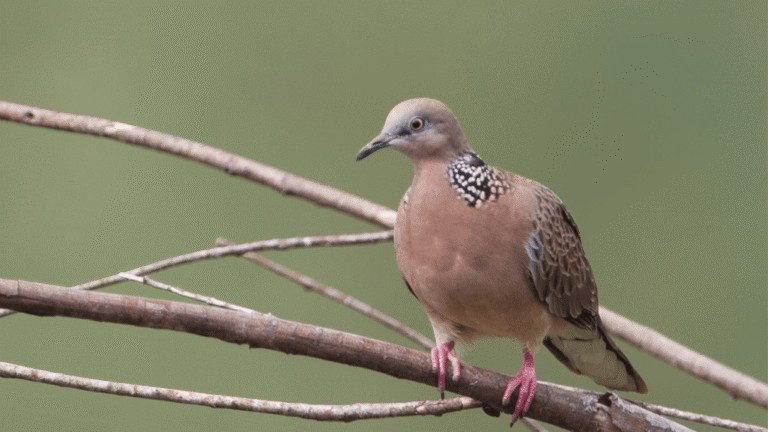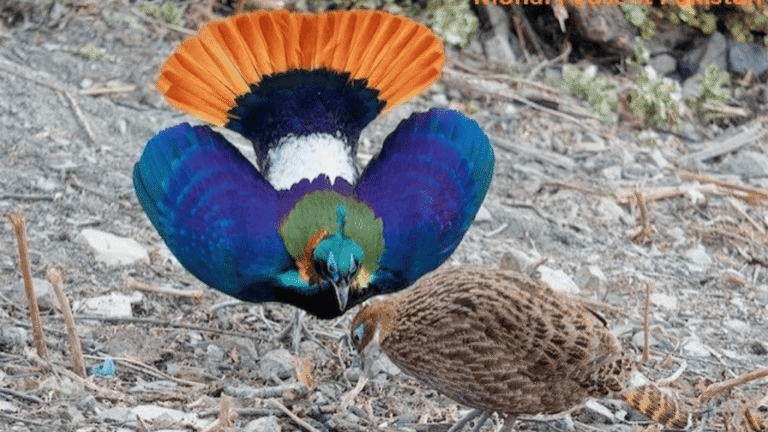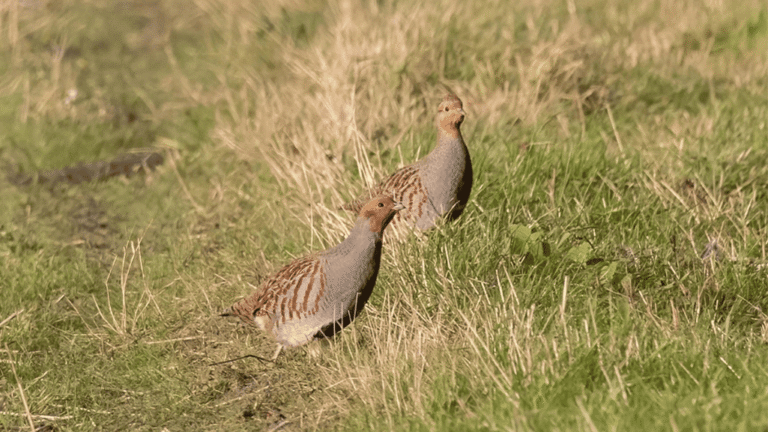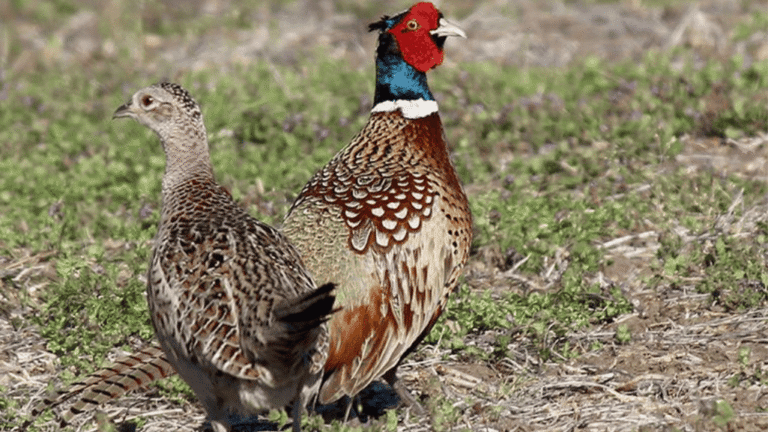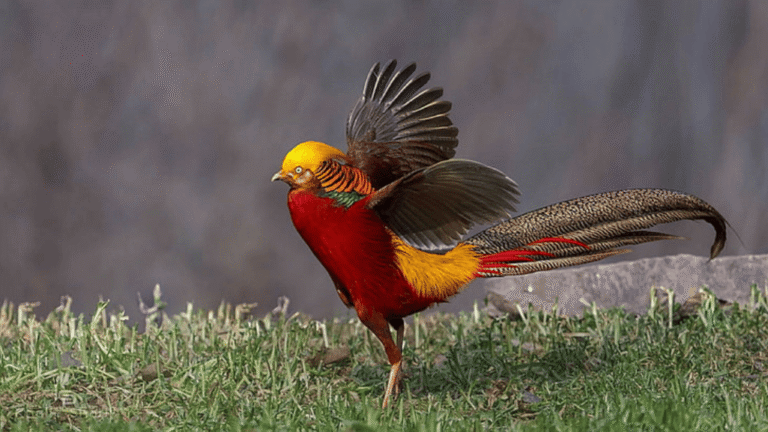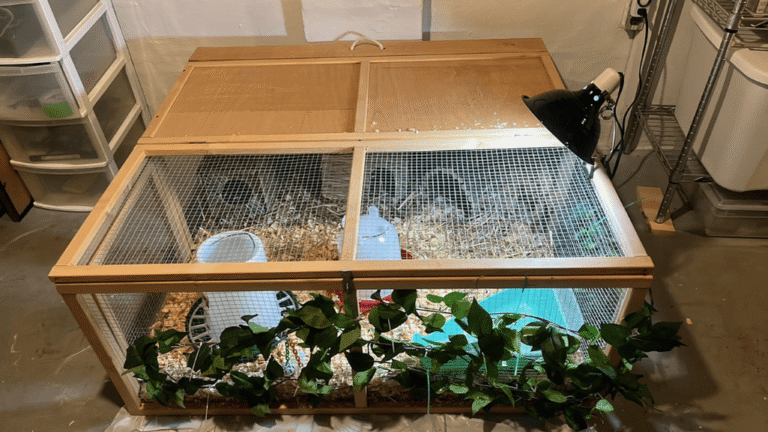Welcome to our guide to the Crested Fireback (Lophura ignita), a striking pheasant species of the tropical rainforests of Southeast Asia. Read on to learn key ID features, where the Bornean crested and related populations live, and what’s being done to protect this remarkable bird and its forest habitat.
Key Takeaways:
The Crested Fireback (Lophura ignita) is a dark pheasant species of Southeast Asian lowland and montane rainforests.
Males have glossy blue‑black plumage with a tufted crest; females are warm chocolate brown with paler-edged feathers.
These birds forage on the forest floor, call with distinctive notes, and perform wing‑whirring courtship displays.
They rely on old‑growth forest but can persist in logged and secondary forest patches.
Populations are declining from habitat loss and hunting — regionally listed as threatened on some red lists; see the conservation section for details and how to help.
Appearance of the Crested Fireback
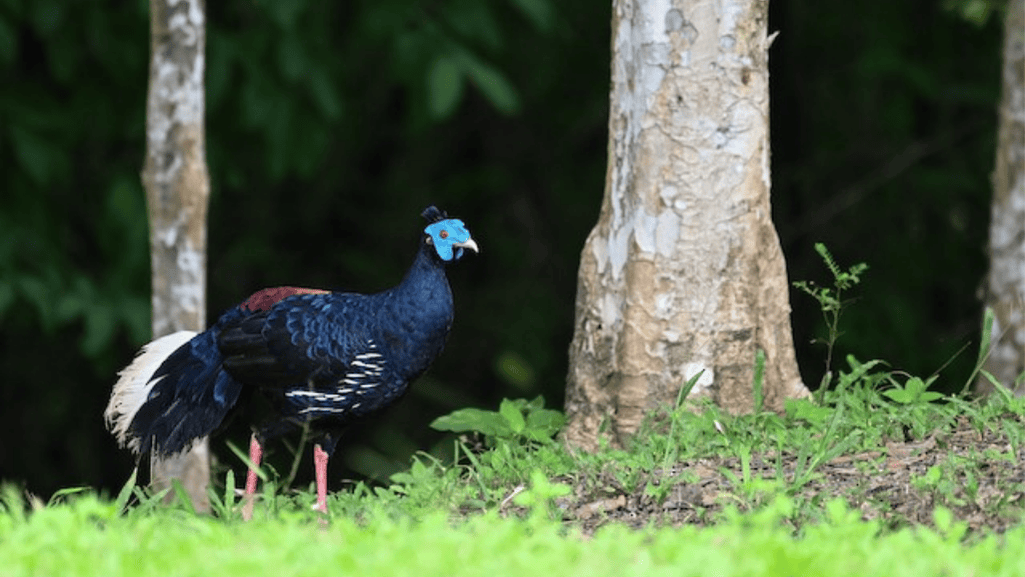 The Crested Fireback (Lophura ignita) shows clear sexual dimorphism: males are boldly colored while females are more cryptic. Below are the key identification features useful for birders and photographers.
The Crested Fireback (Lophura ignita) shows clear sexual dimorphism: males are boldly colored while females are more cryptic. Below are the key identification features useful for birders and photographers.
Male Crested Fireback
The male has glossy, iridescent blue‑black plumage that can appear differently depending on light. A tufted crest on the head is a distinctive field mark. The male also has bright blue facial skin and a contrasting reddish (often described as deep red or chestnut) back with pale or white tail feathers—features that make the male immediately noticeable in the understory.
Female Crested Fireback
Females are warm chocolate brown overall, with paler, finely edged feathers on the underparts. They have shorter brown crests and the same patch of blue facial skin, though it is generally less prominent than in males. The subtler plumage helps females remain camouflaged while on the forest floor.
Both sexes share blue facial skin and the same general body shape, but the combination of crest, facial skin color, back hue, and tail feather color are the most reliable colour and feather characters for identification. Males display these plumage and facial features during courtship, using the crest and bright facial skin to attract females and signal fitness.
Habitat and Distribution of the Crested Fireback
The Crested Fireback (Lophura ignita) is primarily associated with old‑growth tropical lowland and lower montane rainforests, often occurring near rivers, streams, and areas with dense understory. It has some tolerance of habitat modification and is recorded in logged, disturbed, and secondary forests, but demonstrates a clear dependence on forest patches with mature trees and fruiting plants.
Geographically, populations occur in Peninsular and East Malaysia, southern Myanmar, southern Thailand, and parts of Indonesia including Sumatra and Kalimantan (Borneo). Elevationally it is most often reported from lowland sites up to about 1,000 meters above sea level. The Bornean crested populations show local variation and may use slightly different forest types within Borneo.
Habitat Distribution
Old growth forests Peninsular and East Malaysia
Rivers and streams / dense understory South Myanmar
Tropical lowland rainforests South Thailand
Montane rainforests (lower montane) up to ~1000 m Indonesia (Sumatra and Kalimantan)
Logged, disturbed, and secondary forests (occasional)
Behavior of the Crested Fireback
Crested Fireback
The Crested Fireback (Lophura ignita) is primarily a ground‑dwelling pheasant whose behaviors reflect life on the forest floor: foraging alone or in small groups, using vocal signals, and performing distinctive courtship displays.
Foraging
These birds typically forage singly or in small groups, scratching through leaf litter for seeds, fruits, insects, and other invertebrates. They are most often active in low light around dawn and dusk and are frequently recorded near streams and dense understory where food resources and cover are available.
Communication
Crested Firebacks use a mix of calls and nonvocal sounds to communicate. Field reports describe guttural notes often transcribed as “chuckit” and softer “weep” calls used at close range; males also produce mechanical sounds during display. Observers note that birds will respond to playback in some areas, indicating territorial or contact functions for these calls.
Courtship display
Male Crested Firebacks perform a wing‑whirring display—rapid wing beats that create a buzzing or whirring sound—while showing off crest and bright facial skin to visiting females. These displays help males advertise fitness and establish dominance over rivals; they are best observed during the breeding season in undisturbed forest patches.
Practical note for observers: listen for low, guttural calls at dawn and scan the understory and forest edge near fruiting trees. Camera‑trap and dawn surveys are often the most effective ways to document groups and display behavior in remote forest areas.
Diet of the Crested Fireback
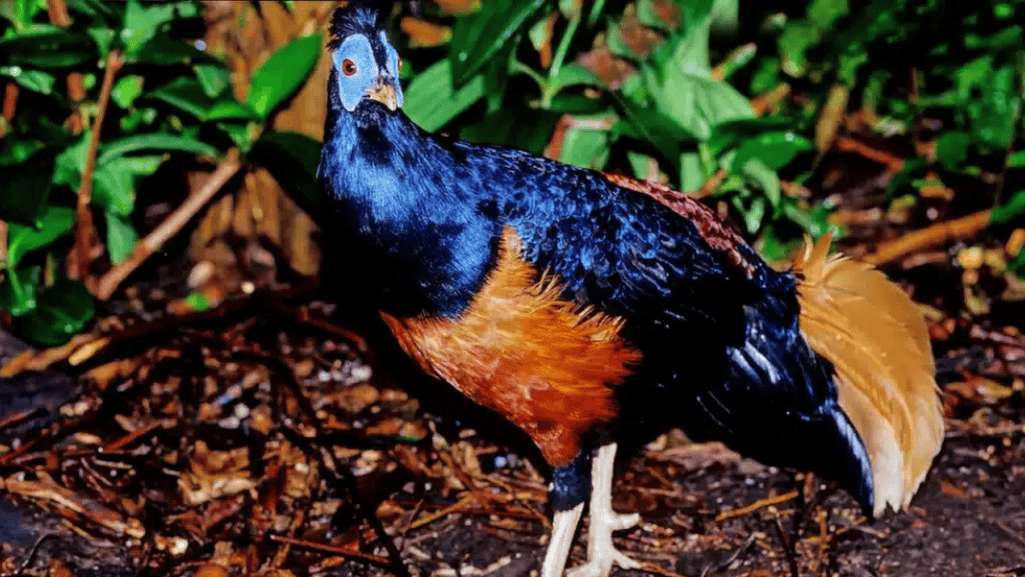 The Crested Fireback has a varied diet that reflects its life on the forest floor. Key food items include:
The Crested Fireback has a varied diet that reflects its life on the forest floor. Key food items include:
– Seeds and fallen fruits (figs are often reported as an important food source)
– Invertebrates such as beetles, ants, and other insects
– Small amounts of plant material and fallen leaves while foraging for concealed prey
These birds show dietary flexibility, shifting between fruit and animal prey as availability changes seasonally. By consuming fruits and moving across the understory, they may contribute to seed dispersal for certain tree species. For observers, checking beneath fruiting trees and leaf litter at dawn and dusk increases the chance of detecting feeding Crested Firebacks.
Conservation Status of the Crested Fireback
 The conservation status of the Crested Fireback is a growing concern: while older broad estimates suggested populations potentially numbering in the tens of thousands, most sources agree that numbers are declining across much of the range.
The conservation status of the Crested Fireback is a growing concern: while older broad estimates suggested populations potentially numbering in the tens of thousands, most sources agree that numbers are declining across much of the range.
Primary threats
Habitat loss and fragmentation from agricultural expansion, conversion to cash‑crop plantations, and logging are the single greatest long‑term threats to this species. Illegal and subsistence hunting further reduces local populations, especially where forest access is easier after logging.
Regional status and protection
Conservation assessments vary regionally. Some peninsular populations (for example in Peninsular Malaysia and parts of Thailand) are considered threatened or endangered at the national level, while Bornean populations (the Bornean crested fireback) show local variation in trend and protection. Current global assessments (see IUCN / BirdLife for the latest listing) should be checked for up‑to‑date Red List status and any changes to legal protection—note that legal protection and enforcement differ between Indonesia, Malaysia, Thailand, and Myanmar.
Adaptability and long‑term outlook
Although Crested Firebacks have been recorded in logged and secondary forests, this apparent adaptability does not remove their dependence on forest patches with mature trees, fruiting trees, and intact understory. Fragmentation reduces habitat connectivity and likely increases vulnerability to hunting and predation, worsening long‑term prospects.
Recommended conservation measures
– Protect and restore remaining old‑growth forest and important fruiting tree stands that support food resources and cover.
– Strengthen anti‑poaching efforts and enforce hunting regulations, including community‑based monitoring where feasible.
– Promote habitat corridors and reduce further fragmentation through land‑use planning that prioritizes biodiversity.
– Support research (population surveys, camera‑trap monitoring) to improve trend estimates and inform targeted conservation actions.
How you can help
Support organizations working on forest protection in Southeast Asia, contribute to citizen‑science reporting programs that document sightings, and raise awareness about the importance of conserving forest habitats and threatened species such as the Crested Fireback (Lophura ignita and local Bornean crested populations).
Predators of the Crested Fireback
Direct studies of predation on the Crested Fireback are limited; as a ground‑dwelling bird, it is reasonable to list likely predators based on similar rainforest pheasants:
Large snakes
Monitor lizards
Small felids and carnivores (wildcats, civets)
Small carnivores
Raptors and other avian predators
Chicks and nests are likely more vulnerable than adults; nest monitoring and camera‑trap studies are the best sources of direct evidence. Note that predation risk can increase where fragmentation and logging expose birds by reducing cover and altering predator communities.
IMAGE CAPTION: The Crested Fireback may face predation from ground‑dwelling predators and avian predators, such as raptors.
Conclusion
The Crested Fireback (Lophura ignita) is a distinctive forest pheasant species known for sexual dimorphism: the male’s glossy blue‑black plumage, tufted crest, and bright blue facial skin contrast with the female’s warm brown plumage and subtler crest. Found across lowland and lower montane rainforests in Malaysia, Thailand, Myanmar, and parts of Indonesia (including Sumatra and Kalimantan), the species relies on intact forest patches and fruiting trees for food and cover.
These ground‑dwelling birds forage on the forest floor for seeds, fruits (figs and other fallen fruit), and invertebrates, communicate with distinctive guttural and soft calls, and display with wing‑whirring and crest/facial skin signals during courtship. Populations are declining in many areas due to habitat loss from agriculture, logging and plantation expansion, and from hunting; some regional populations are listed as threatened on national red lists.
Three concrete actions to help safeguard the Crested Fireback:
– Support protection and restoration of old‑growth forest and important fruiting trees to maintain food resources and cover.
– Back community‑based anti‑poaching and law‑enforcement measures to reduce hunting pressure.
– Fund and promote research and monitoring (camera‑traps, surveys) to improve population and trend data for targeted conservation (including for Bornean crested populations).
Further reading and involvement: check the latest IUCN/BirdLife assessments for current Red List status of Lophura ignita and local conservation listings, consider supporting regional forest conservation NGOs, and report sightings via citizen‑science platforms to help track distribution and trends.
Frequently Asked Questions
What does the Crested Fireback look like?
Male Crested Firebacks have glossy blue‑black plumage, a tufted crest, bright blue facial skin and a contrasting reddish back with pale tail feathers; females are warm chocolate brown with paler‑edged underparts and a shorter brown crest.
Where is the Crested Fireback found?
Across Southeast Asian rainforests in Peninsular and East Malaysia, southern Thailand, southern Myanmar, and parts of Indonesia (Sumatra and Kalimantan/Borneo), mainly in old‑growth and lower montane forests up to about 1,000 m.
How does it behave?
It forages on the forest floor alone or in small groups, uses guttural and soft calls for communication, and males perform wing‑whirring displays during courtship.
What does it eat?
Diet includes fallen fruits (often figs), seeds, invertebrates (beetles, ants and other insects) and small amounts of plant material while searching leaf litter.
What is its conservation status?
Regional statuses vary: some peninsular populations are considered threatened or endangered at the national level; check current IUCN/BirdLife listings for up‑to‑date global status and national red lists for local designations.
Who preys on it?
While direct studies are limited, likely predators include large snakes, monitor lizards, small felids and carnivores, and raptors—chicks and nests are usually most vulnerable.





